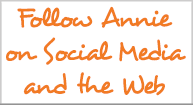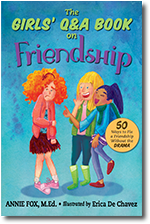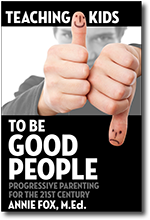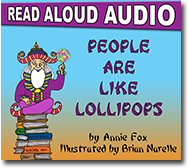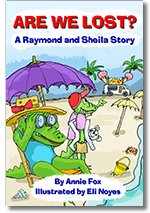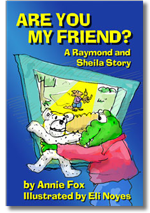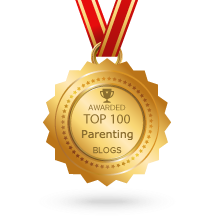|
|
April 23, 2015
 A Good Use of Power In our 40 years together, David and I have read many books. Add another hundred or so books on tape we’ve consumed on road trips. Yep, we’re addicted to good stories. So it wasn’t too weird when, after a business trip to Florida and a side trip to Universal’s Wizarding World, we decided to re-read all the Harry Potter books… aloud… to each other.
Starting in mid-December, I’d read a couple chapters over breakfast each morning. At dinner, with wine and candlelight, I’d read another chapter or so. If we were driving for more than 20 minutes in any direction, I’d read aloud in the car. (Yes, I can do that without barfing. Lucky me.) At the end of each day we’d watch the film adaptation of the current book, making sure to stop when we got to a new part (i.e., a section of film we hadn’t yet read.)
To date we’ve completed six books and six films. (When we get into something we really get into it.) We’re now half-way through Book 7.
Ever since the kids of Hogwarts took their education into their own hands, I’ve been thinking about the Dark Arts as it relates to the dark side of humanity. While we rarely hear about jinxes or debilitating spells, we’re plenty aware of public humiliation and shaming in social media. Character assasination is a curse, high on the list of Dark Arts. So how do we defend ourselves against the real and present danger of social garbage? How do we teach our kids to defend themselves, online and off, from the hostility of their peers? Where is Harry Potter when we need him?
When I think about what it means to defend oneself, I picture someone standing up for their rights or the rights of others and actively fighting back against the vitriol. But there is inherent danger when one uses vitriol to fight vitriol. The weapon we use has the power to infect us and make us more and more like the perpetrators we seek to vanquish. We can so easily become the enemy. Doing the right thing in a good way isn’t easy.
How do you help your children defend themselves against the prevailing Culture of Cruelty? How do you teach them not to succumb to its ways? Post here and let’s get into it. You can also follow my tweets at @Annie_Fox and @GirlDramaChat. Every Friday you can join the conversation as I host #girldramachat, a weekly Twitter chat (11AM PST) to help parents/teachers/counselors support girls thru friendship drama w/compassion, respect & social courage.

January 30, 2014
It seems like we’re always swimming in social garbage – everything from the “just kidding” remarks from so-called friends to the snarky comments from people who hate you (online and off). When it comes to social garbage all of us have had it dumped on us. And all of us have dumped it on others. Weird thing, though, when I talk to students they all wish their school was a place where they could be accepted for who they are… without all that other crap.
So how do we get there from where we are now? How do we get everyone (including ourselves) to wake up and smell the garbage? This excerpt from my book, Teaching Kids to Be Good People, gives you some new ways to think about gossip, rumors and what it takes to clean up your act.
Don’t Add to the Garbage
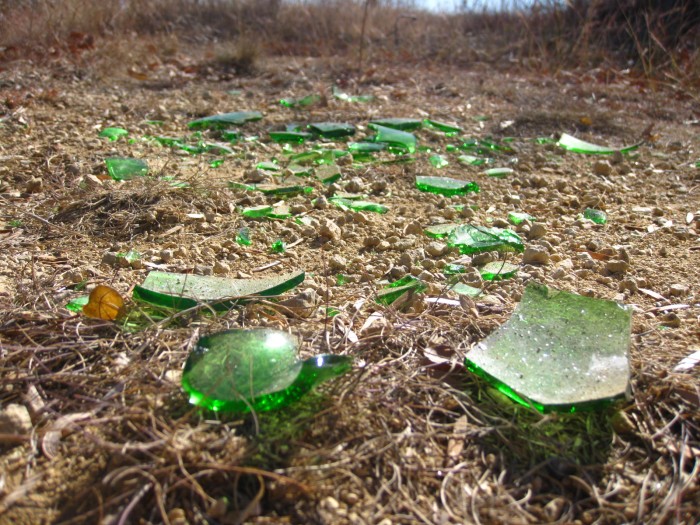 Hey, this is our park! Up our street lies Faudé Park. Undeveloped except for some narrow trails carved into the hill, this 13.5 acre community treasure offers a mini-retreat to everyone wandering through. When David and I first ventured up to Faudé’s highest point, we were delighted by the knockout view of Mt. Tamalpais. We were also depressed by the thick carpet of broken beer bottles tossed by partygoers who obviously enjoyed the “natural” environment. (A trashcan sits 20 feet from the peak. But hey, the ground’s handier, right?)
David and I aren’t neat freaks. Far from it. But we hated seeing all that glass in such a beautiful setting, so we started cleaning it up. The first day we spent 30 minutes picking up the biggest chunks of glass. When we returned a week later, new chunks replaced some of what we removed. But we weren’t deterred. Over the next several months, we kept picking up glass.
At some point things began to change. Weekend revelers stopped tossing bottles on the ground. Maybe because they could now see the ground! Or maybe the beauty of the park became apparent and now they decided it wasn’t cool to mess it up. Can’t say for sure, but whatever the reason, David and I were happy with the change and didn’t mind taking a little credit for getting things rolling in the right direction.
Turns out the trends we observed at the park reflect a bona fide sociological phenomenon called the broken windows theory. Apparently, the more rundown a neighborhood becomes, the more likely people will break windows in abandoned buildings, graffiti walls, and litter. The crime rate increases too. Conversely, when a neighborhood gets cleaned up, everything improves.
The turnaround at Faudé Park happened years ago, but I’m pleased to report that as of my walk this morning, the overlook is still totally free of garbage. Of course, not all garbage is equal, and the kind infecting most schools, aka social garbage, is of the invisible yet more toxic variety.
I frequently ask students: “If you walk into a room already littered with trash, is it OK to toss your candy wrapper on the floor?” Some kids will say, “Sure, it’s OK.” Why? Because “everyone else is doing it and you won’t get in trouble.”
Then I ask, “If the floor is clean, is it still OK to toss your trash?” Now most kids will say no. But a few kids are likely to let me know it’s never OK to add to the garbage. Which is when I switch the discussion from candy wrappers to rude comments, rumors, and the rest of the social garbage many kids slog through every day.
A school’s mission statement typically mentions something about respect and social responsibility. But how are schools teaching these values to their students? How are we, as parents, teaching them to our kids? We want them to grow into thoughtful, compassionate young adults who take time to think about their choices before they act, hopefully reflecting: “If I really want less garbage at school and at home, what can I do? Am I willing to watch my mouth and keep more hurtful comments to myself? Am I willing to stand up for someone being teased? Am I willing to speak out against demeaning ‘jokes’? Willing to sincerely apologize when I mess up and hurt someone? Willing to reach out to someone who needs a friend?”
As I see it, the goal of effective parenting (aside from keeping your kid alive and well), is to help him develop a code of ethics. If you want your child to become a good person whose actions demonstrate a high level of personal integrity, if you want her to help promote more friendship, peace, and justice in the world, you need a plan.
Character development is an ongoing process for each of us. We have to consistently work through all these issues with our kids and our students, our colleagues and our partners. Talk about ethical behavior where you see it and where you don’t. Model it in your own life. Help children evaluate their choices and learn from their mistakes. Help them deal with intense emotions in appropriate and responsible ways so they don’t intentionally hurt other people.
There are no easy answers here, but one thing is for sure, the world desperately needs less garbage.

December 17, 2013
Excerpted from my book, Teaching Kids to Be Good People.
 A no-tech solution to connection addiction While we’re all moving in ten directions at once, online and off, the notion of evenings and weekends where parents and kids spend unplugged time together is laughably retro. But life is neither virtual nor infinite. We’ve got to create an antidote to 21st century craziness otherwise our kids will grow up without us really knowing them and without them knowing us.
Listening (the old- fashioned way) with open eyes, mind, and heart is the best way we connect with our kids, and teach them how to connect with others. That’s what we want from them and for them. They need it now while they’re still learning about healthy relationships from us, so they can use it later when they’re creating intimate relationships of their own.
How do we teach them that the people we care about aren’t just on Facebook and Twitter, they’re right here in the real world and they deserve our attention?
Fuel for Thought—Think about a relationship you have where the other person is often “distracted.” What’s it like being with him/her? Contrast that with someone who is normally “there” with you. Now think about the level of “there-ness” you give to your family. Set a goal for the next week: Do a better job being with your family when you’re actually with them. Do not allow distractions to get in the way. Observe what happens.
Conversations That Count—Talk with your partner and child(ten) about digital distractions, including phones, games, TV shows, and computers. Ask them to rate the family (on a 1–10 scale) regarding the presence of distractions while people are talking to each other.
(Scoring scale: 1 = When we talk to each other, we’re not doing anything else; 10 = When we talk to each other there’s always a “distraction” present.)
Your 21st century child may not even have noticed or considered these “distractions” as anything other than “normal.” Ask what s/he thinks family life (vis-à-vis “distractions”) might look like when s/he’s grown up with their own family.
Teach—Create an Unplugging Challenge. Start small and doable. For example, “On Saturday from 4:00–5:00 p.m. we’re unplugging for an hour to do something fun, together, as a family.” Be ready for pushback from tweens/teens. Remind them it’s only for one hour. “Surely you guys can last 60 minutes w/o FB?!” “Yeah, of course we can, but we don’t want to!!!” The more resistance, the more likely your kids have a connection addiction. But don’t cave. Be upbeat. Take suggestions for a non-tech activity the family can do together for that short time. Play a board game, card game, make popcorn, build something, cook something, bake something, create something, take a walk, go for a bike ride, have an impromptu meal outside, read aloud from a mystery book, look at old family photos and tell stories. Etc. etc. Be together. Focus on each other. Have fun. Repeat often. Appreciate being a family. It’s the best gift there is during any season.

October 16, 2013
 Rebecca Sedwick (2001-2013) (See UPDATES below) Last month I wrote about Rebecca Sedwick, a 12 year old Florida girl who jumped to her death from the tower of an abandoned cement factory. Rebecca apparently couldn’t imagine another way to end the online harassment she’d suffered for months.
I desperately want to believe that adults who knew Rebecca would have supported her and effectively stopped her tormentors, if only they had known. But she didn’t feel supported. And the tormentors weren’t stopped. Was it because not one adult knew anything about what was going on all that time? I find it hard to imagine that one child in so much pain and a group of other children with so much hate-fueled energy could escape the notice of all the adults around them. But I guess it’s possible. We’re all so busy and kids are pretty good at hiding stuff they don’t want us to know about. But still…
BullyPolice.org, a well-respected watchdog organization that advocates for bullied children and reports on states’ anti-bullying laws, gives Florida an A++ rating. Great work, Florida. Laws change behavior. And yet, at least in this case, the law didn’t deter a group of children from maliciously harassing another child. I could be wrong, but because the cyberbullying took place in public over a period of months, I assume some adults knew who was involved.
According to the AP, Florida’s newly amended cyberbullying law “leaves punishment up to the school, but law enforcement can seek criminal charges.” I don’t know if any kids were disciplined by the school or their parents, but on Monday two girls, a 12 and a 14 year old, were arrested and charged with felony aggravated stalking. The 12 year old was once Rebecca’s friend. The 14 year old allegedly posted this on Facebook last Saturday: “Yes ik [I know] I bullied REBECCA nd she killed her self but IDGAF [I don’t give a (expletive)]”
This toxic social garage stinks to high heaven. It’s now so typical it’s not really even news any more. In case you haven’t guessed, I’m disheartened. Which means I’m at risk for becoming desensitized to this cruelty. But I’m not going to let that happen. I can’t.
So I read some of the comments posted about this case. Many folks indicated that the girls were “just mean.” Meaning what? That cruelty is their nature and it can’t be changed, so why bother? These are kids, dammit. We are the adults. They learn from us. If we’ve taught them not to “give a bleep” about anyone but themselves, then we’ve got to teach them something else. Otherwise we’re all bleeped.
Check out Day 17 of the Kindness and Respect Challenge
UPDATE: April 8, 2014 AP reports on Rebecca Sedwick’s case file.
UPDATE: November 21, 2013 Charges dropped against the girls in Rebecca Sedwick bullying case

| |






